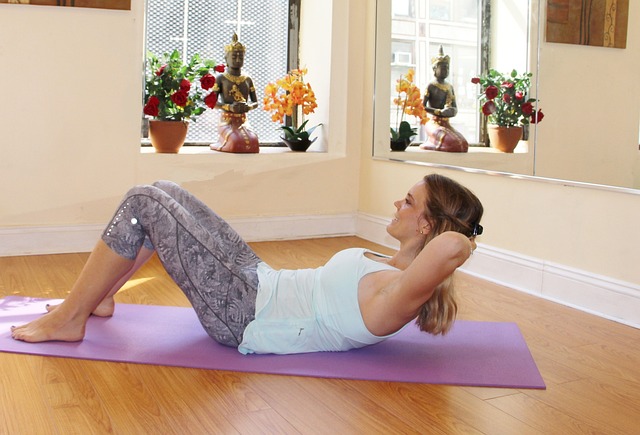Cross-training is a term that is frequently used in the gym. It’s a term that everyone seems to know, yet its precise explanation remains tricky, especially to the uninitiated.
For example, you may hear a serious lifter declare, “I’m not lifting today, man. I’m cross-training with some jogging,” whereas you hear a serious runner say, “Today’s my cross-training day. Therefore I’m going to lift weights.”
Did you notice what I said? A typical workout for one individual is a cross-training workout for another. So, how do you know what your cross-training workout should be? Fortunately, it’s not as perplexing as it appears.
What Exactly Is Cross-Training?
Cross-training is any workout that supplements your regular program, assisting in the correction of potential muscle imbalances or deficits. It ultimately improves your fitness while decreasing your risk of injury.
Everything is fantastic, right? Yet, this does not answer the question of whether the cross-training workout is best for you.
To clarify, you must first understand the five health-related components of fitness:
- Cardiovascular endurance is your heart’s and lungs’ ability to keep up with your muscles’ demands for oxygenated blood and fuel throughout a workout.
- Muscular endurance refers to how long your functioning muscles can continue to accomplish a given task.
- Muscular strength is the amount of strength that a muscle can exert against resistance (how much you can lift in a single bout).
- Flexibility is the range of mobility you have around any given joint.
- Body composition: The relationship between total health and the ratio between fat-free mass to fat mass (muscle, bone, water, and other tissue).
In an ideal world, your regular training plan would equally address each of these five fitness components. Yet, because people are frequently drawn to a specific activity or training style, it is common for training to become uneven, with one or two components of fitness substantially outweighing the others. And, while you may believe this isn’t a huge issue, it’s far from ideal.
Consider it this way. The five fitness components are analogous to the five fingers on your hand. Each finger is essential to the entire operation of your hand, just as each component of fitness is essential to your overall health. While you may consider one finger to be more useful than another, you are unlikely to want to give up any of them. Similarly, while assessing your overall health, it is critical to focus on all five fitness components.

Cross-training is a technique for maintaining all five components of fitness or the proverbial five fingers. For example, if you’re a dedicated yogi, which is fantastic for flexibility and some muscular endurance, your cross-training regimen may incorporate extra cardio or strength training routines to improve your cardiovascular endurance and physical strength.
Similarly, if you’re a heavy lifter, which is wonderful for muscular strength and body composition, you may combine it with activities that improve your flexibility and cardiovascular endurance. In this sense, cross-training isn’t a specific activity; it’s a personalized strategy for training that aims to maximize your personal health and fitness.
The 7 Most Important Facts About Cross-Training
Cross-training is a simple concept, and here is a list of its benefits and how to incorporate effective workouts into your training routine.
1. There is no one-size-fits-all solution.
Because your usual workout may differ from that of your best buddy (you enjoy barre class while your best friend enjoys swimming), the optimum cross-training workout for you will most likely differ from that of your friend. While preparing your cross-training regimen, consider your shortcomings and how you may choose a cross-training workout that helps offset them.
2. It May Help in the Prevention of Boredom
Performing the same workout day after day, ad nauseam is a proven way to get bored and quit the gym. Not to add, if your body is on autopilot, you’re less inclined to push yourself hard during workouts. Cross-training is an excellent method to mix up your routine and add some “oomph” to your workouts. If you keep adding new and different workouts to your training schedule, you’ll never get bored.
3. It has the potential to reduce the likelihood of injuries.
If your workout routine is same at the gym or walk down the street, you’re continually putting stress on the same muscle groups in the same way, over and over and over. If you do this for an extended period of time, you’re basically begging for an overuse injury. Cross-training allows fatigued muscles, tendons, and ligaments to rest and recover before being put to work again.
Another disadvantage of repeating the same workout is that while certain of your muscles are worked on a regular basis, others may not receive the same level of attention. This might result in musculoskeletal imbalances, which can lead to injuries and persistent pain. When you select a cross-training exercise that effectively strengthens any deficits you may have, you provide your body with the balance it needs to support an active, injury-resistant lifestyle.
4. It can boost motivation.
You probably maintain completing the same workout for one (or more) of the following reasons:
- It’s easy to remember and doesn’t require much thought.
- You like it.
- You’re quite good at it.
Yet, if your routine does not alter, it becomes increasingly difficult to create new goals and push yourself. Cross-training is an excellent technique to increase the difficulty of your workout while also providing fresh possibilities to achieve new goals.
Incorporating a new yoga class into your cardio-heavy training schedule, for example, will be difficult. You’re unlikely to have the balance or flexibility to perform all of the poses on your first try. But this challenge allows you to progress, and you may find yourself becoming excited to nail a warrior III or crow position.
5. It’s inefficient—which is a good thing.
Bodies are incredible. They are intended to save energy and carry out activities as effectively as possible. When a task is done frequently, they improve brain pathways, builds stronger motor units, undergoes cellular modifications to improve energy delivery, and establishes “muscle memory” to put frequently repeated operations on autopilot.
These are all fantastic human physiology features, but there is a limit to the advantage in terms of fitness. The law of diminishing returns kicks in as you repeat a single workout. When your body gets more efficient, you burn fewer calories and adapt less, resulting in the dreaded fitness plateau.
As an example, If you begin a fitness program with the objective of jogging three miles at a 10-minute-per-mile pace, it will most likely be difficult at first, and it may take some time to reach your goal. But if you persevere, your body will adjust, and you will succeed. If you continue to run three miles at a 10-minute-per-mile pace without tweaking or changing your routine, your body becomes more efficient, the workout becomes easier, and you no longer see benefits beyond your early gains.
Cross-training helps keep your body guessing. As you add new exercises and routines to your calendar, you’re telling your brain and body that you haven’t mastered these new routines yet, and that your body needs to work harder to overcome its inefficiencies. These frequent modifications and adaptations eventually improve your fitness level and help you break past workout plateaus.
6. It Can Aid in the Development of New Skills
Assume you are a bicycle who decides to learn to dance on a massive scale. Nevertheless, skill improvement through cross-training extends beyond that. There are six skill-related components of fitness in addition to the five health-related components. Speed, power, response time, agility, balance, and coordination are examples of athletic skills.
The skill-related components, like the health-related fitness components, are all equally necessary for well-balanced athletic performance. Cross-training allows you to build talents that are not necessarily related to your favorite workout.
Take, for example, the cyclist who begins cross-training with dancing. Cycling is an excellent technique to improve power, speed, and balance, but it does not necessarily improve agility, coordination, or response time. Dancing, on the other hand, could be the ideal cross-training routine to help balance out those underdeveloped skills and create a more well-rounded athlete.
7. It Allows for Exercise Flexibility
When you quit pigeonholing yourself into a particular workout program, you’re better equipped mentally and physically to roll with the punches that can sometimes interfere with day-to-day workout goals. For example, if you regularly run three days a week and cross-train two days a week by attending a strength training class at your local gym, you can easily switch up your workout plan and hit the gym for a rain-free routine the next time a large storm stops you from getting your run in.
You don’t have to cancel your training plans if your boxing class is unexpectedly filled. You can simply go to the cardio or weight room instead. The more familiar you are with a range of activities and the benefits of cross-training, the more flexible you can be with your schedule and plans.
3 Ways to Design a Cross-Training Workout
If you’re still unsure how to incorporate cross-training into your weekly workout, consider these suggestions to help you come up with a strategy.
1. Create a Timetable
There’s no need to entirely overhaul your workout routine to accommodate cross-training. Examine your weekly schedule and ask yourself one question: How can I incorporate cross-training into the mix?
One to two cross-training exercises per week is a decent rule of thumb. You can accomplish this in one of three ways:
- Include one or two cross-training workouts in your weekly routine.
- Substitute one or two of your scheduled workouts.
- Add cross-training to a handful of your existing exercises.
The ideal option for you is entirely dependent on how much time you have to devote to your exercises and the type of cross-training you want to conduct.
For example, if you want to add flexibility training to your routine, you could plan a yoga session once a week, substitute one of your other workouts with a yoga class, or carve out 15 minutes on days you’re already scheduled to work out and dedicate that time to stretching. The main thing is to develop a game plan and a schedule for cross-training.
2. Experiment with New Things
It’s easy to become locked in a rut when it comes to any exercise regime. Aim to change up your cross-training workout once a month. You can accomplish this in four ways:
Include new workouts in your workout. For example, if your cross-training regimen includes strength training, after a month of doing the same workout, replace your go-to exercises with new or alternative exercises that target the same muscle areas but in slightly different ways. Try a squat variant like the hack squat instead of a back squat. Try a dumbbell bench press instead of a barbell bench press.
Experiment with new equipment. If you’ve never attempted balance training, why not put yourself to the test by performing exercises on a BOSU ball? If you’ve never tried TRX suspension training, now is as good a moment as any.
Enroll in a new class or activity. Water jogging is one option for powerlifters. Rock climbing is an option for runners. Trampoline aficionados may want to try barre. Why limit yourself when there are virtually no limits to the number of classes and activities available? When it comes to being active, learning new skills is half the joy.
Change up your current fitness routine. Even if you’re entirely committed to your simple cross-training plan, you may still shake things up by modifying how you approach your workout. For example, if your cross-training regimen includes strength training with heavy weights, try high-intensity interval training, circuit training, or solely bodyweight activities. If your cross-training routine is a weekly yoga session, try a different kind of yoga, such as hot yoga, SUP yoga, or aerial yoga.
3. Consider the Effect
Another strategy to consider implementing cross-training is to think about the level of impact your current workout provides and then choose a cross-training regimen that counterbalances that effect. High-impact and weight-bearing activities, you know, help grow muscle mass and bone density, but they also put more strain on your bones and joints. Cross-training with lower-impact activities like swimming, cycling, or rowing is an excellent option if your regimen consists primarily of high-impact exercises like running and leaping.
The opposite is also true. Suppose your primary workout is low-impact, including weight-bearing or higher-impact exercises in your cross-training regimen. Swimmers, for example, may wish to supplement their training with strength training or dance.
Workouts for Cross-Training
Consider the following information on cross-training for specific sports, activities, and goals as a starting point:
- 10 Workouts for Cross-Training
- How to Cross-Train for Running by Walking
- Pilates, Yoga, or Barre Cross-Training
- Balance and coordination can be improved through slacklining.
- Runners’ Bleacher Exercise to Increase Power and Strength
- Fusion Workouts to Improve Whole Physical Fitness
- Endurance Strength Training Athletes
- Basketball Strength Training
- Tennis Strength Training
- Golf Strength Training
- Baseball Strength Training
- Strengthening Your Field Hockey Skills
- Football Strength Training
- How to Continue Exercising While Injured
To Conclude
Finally, there is no right or wrong way to go about implementing a plan. Don’t waste time overthinking your decisions or becoming bogged down by “rules.” Simply keep trying new things, adjusting your training routine, and doing what feels appropriate and pleasant.
The goal is to improve health by cultivating well-balanced measures of physical fitness. This will not happen immediately, so choose a cross-training exercise and stick with it. After a month, you can reevaluate. There’s no need to be concerned about where to begin.


